#Sarpadian Empires
Photo
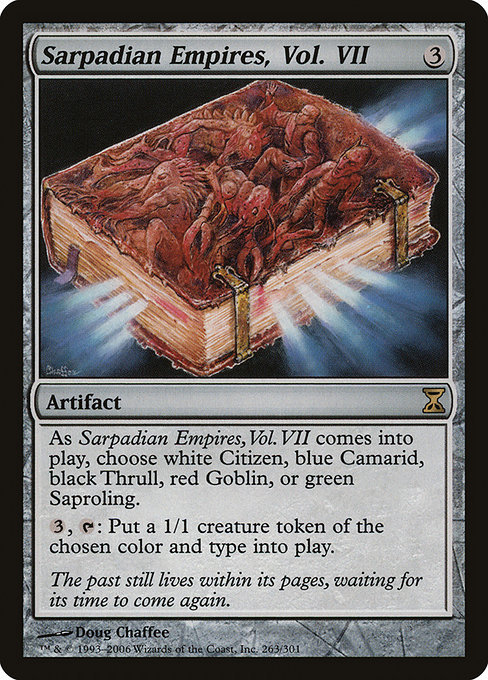
Sarpadian Empires, Vol. VII
The past still lives within its pages, waiting for its time to come again.
Artist: Doug Chaffee
TCG Player Link
Scryfall Link
EDHREC Link
42 notes
·
View notes
Text
Flavor Text Highlights - Fallen Empires
<- Previous Set | Next Set ->
Funny - Orcish Spy
“You idiot! Never let the spies mingle with the Orcish regulars after completing a mission. Now we’ll never get them to fight!”
—General Khurzog
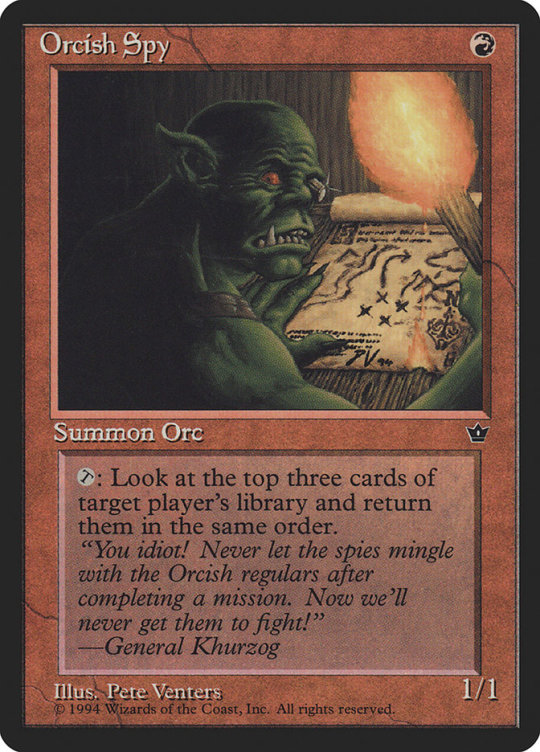
Worldbuilding - Order of the Ebon Hand
“There are intriguing similarities between the Order and Icatia’s Leitbur religion, suggesting the two had a common origin.”
—Sarpadian Empires, vol. VI
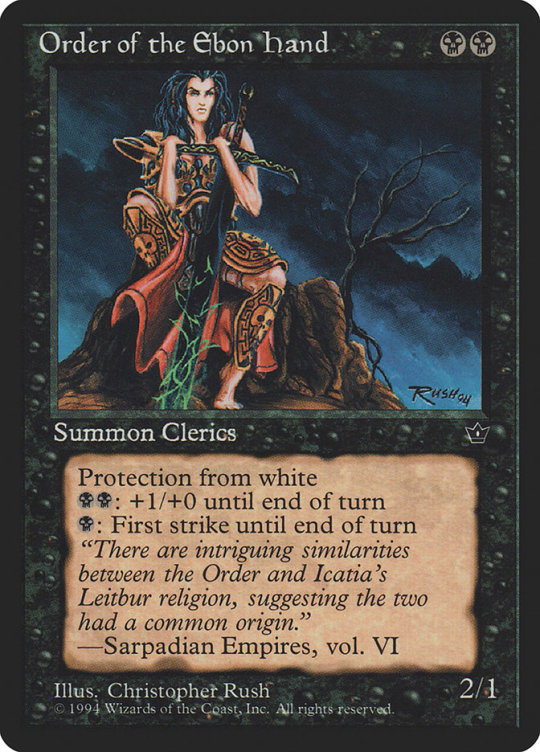
Worldbuilding - Armor Thrull
“The worst thing about being a mercenary for the Ebon Hand is having to wear a dead Thrull.”
—Ivra Jursdotter
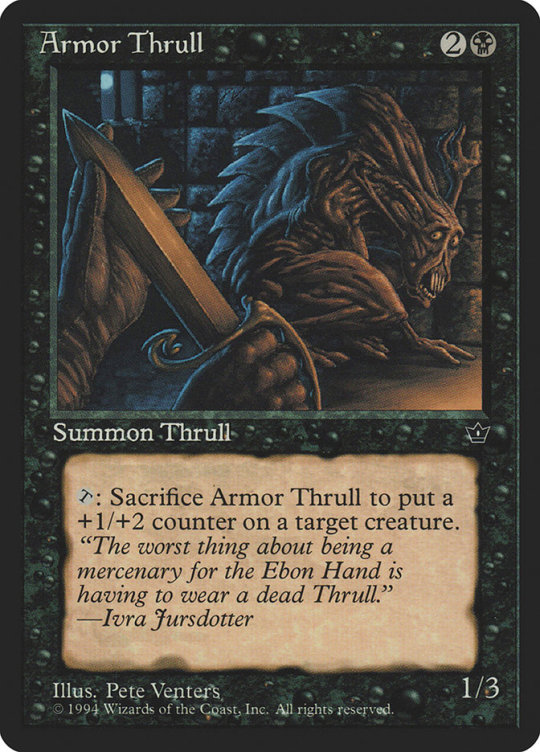
Emotional - Dwarven Soldier
“Let no one say we did not fight until the last … .”
—Headstone fragment from a mass grave found in the Crimson Peaks
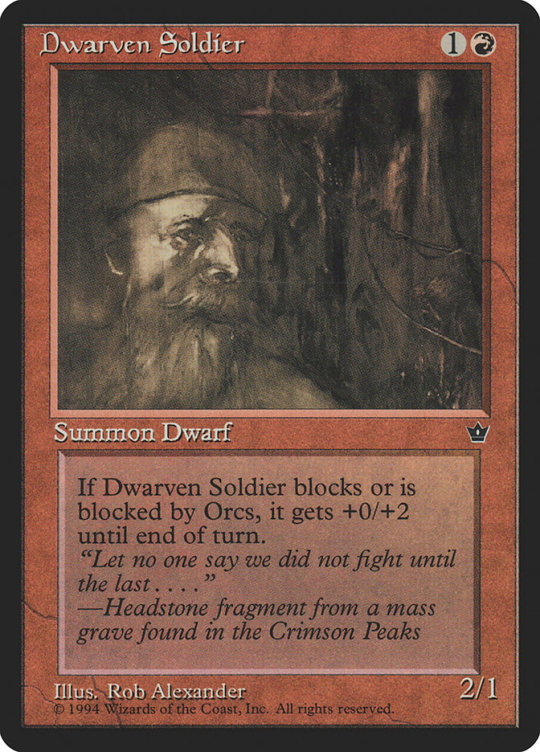
<- Previous Set | Next Set ->
23 notes
·
View notes
Text
Round 2 Group 1
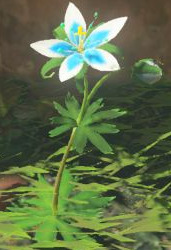
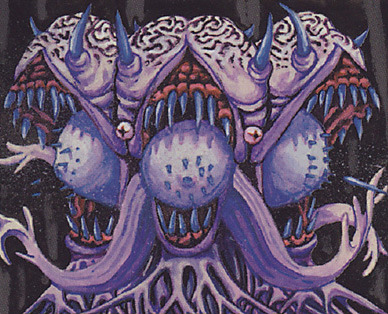
Propaganda and spoilers under cut
Silent Princess:
Oh, the symbolism! These flowers are associated with Princess Zelda. Zelda and the flowers both struggle to thrive in their natural environments, with Zelda being unable to focus her magic before the Calamity, suffering from the pressure of her responsibilities, and the flowers slowly going extinct in the wild, unable to grow in captivity.
Previous propaganda: round 1
Thorn Thallid:
Originally the thallids were bred as food. Thorn thallids seem to have developed a defense against this.
"The cooling climate forced the elves to experiment with new food sources." - Sarpadian Empires, vol. I
"The dangers in cultivating massive plants caught the elves by surprise." - Sarpadian Empires, vol. III
"Scholars still debate whether the Thallids were truly sentient." - Sarpadian Empires, Vol. III
"I don't know which is worse, getting hit with those darts or having to watch them grow back." - Orcish Soldier
5 notes
·
View notes
Note
If Brothers War does really well, does that put the idea of "past event retold" for other sets go on the table? I would love to see a modern set that retells the fall of the Sarpadian empires.
Success breeds repetition.
46 notes
·
View notes
Text
Goblin Reviews 40: Time Spiral
You’ve created a time paradox!
Time Spiral was a completely absurd block full of throwback cards, callbacks to old ideas, and remixes of various cards from the past. Some of these are just cute and goofy, others have gone on to be staples of decks in older formats.
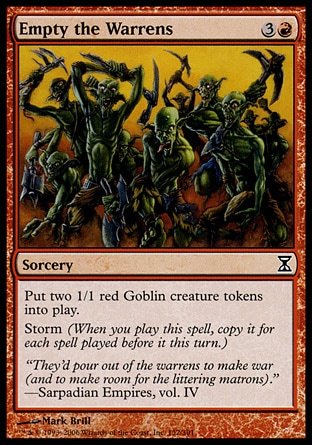
Empty the Warrens returns the Storm mechanic from Scourge (a goblin heavy bock) and is a direct callback to the card Goblin Warrens, an enchantment that creates goblin tokens on activation. Empty the Warrens is a modern and legacy powerhouse, part of the deck archetype known as “Storm” and often winning by creating a lethal amount of goblins and turning them sideways. Storm is its own deck, and Empty the Warrens really only belongs in a deck built entirely around the mechanic. Most notably, it pumps out more goblins than most actual “Goblin” decks do. In an actual goblin deck, though, a generally lower curve and lack of acceleration means it’s going to be difficult to get more than four goblin tokens out of this, making it ‘fine’ but not great.
Goblin Skycutter’s flavor text mentions a fear of heights, and indeed his ability is that of the spell “Vertigo.” A piker’s body with a decent ability makes him useful in limited, but not strong enough for any constructed format.

Ib Halfheart, Goblin Tactician is mentioned in the flavor text of many cards in Ice Age block, including Coldsnap, and his activated ability allows for the spell “Mogg Alarm” at will. Ib Halfheart is a viable curve-topper in a goblin deck due to his ability to turn excess mountains into goblins and makes blocking goblins less favorable. If it wasn’t for Krenko, Mob Boss being a card that exists, I’d even suggest he’d be a good goblin Commander. Run him in Krenko and in Purphoros to get more goblins in a pinch.

Mogg War Marshal, a direct callback to Goblin Marshal, is an important component of 8-whack. Getting two goblins for two mana, and eventually a third when the original dies, makes this an incredibly efficient use of mana that combines well with any go-wide strategy. The only difficult question of this card is when to pay the echo cost or not, and that is often an agonizing decision. Mogg War Marshal is as efficient as you can get for making multiple goblins, and is something that should be on the radar of any goblin deck.

Sarpadian Empires, Vol. VII, costs 3 to play and 3 to activate to get a 1/1 creature token. It has the option to make tokens of any color, but Goblin is the only one of those types that’s strong (and Saproling’s the only other that’s even relevant.) Spending 3 for a 1/1 once per turn isn’t a good deal, even ignoring the fact that the first one costs six. In a slower Commander deck, it’s not entirely unreasonable, but there’s just far, far better cards for spitting out goblin tokens. The card itself is a callback to dozens of cards featuring quotes from earlier volumes of Sarpadian Empires.

Thick-Skinned Goblin is a call back to Keeper of Kookus, who’s flavor text refers to him as such. A standard piker body is always a comfortable baseline, and the ability to gain protection from red could be useful in a lot of games, though there’s better cards for fighting red with red. His real special ability is allowing his controller to pay 0 instead of echo costs, and the potential for this is actually rather high. There are plenty of solid cards with echo, including five goblins, and it wouldn’t be entirely unreasonable to run Thick-Skinned Goblin. Sadly, he has a problem in a lack of redundancy. Only being able to run four Thick-Skinned Goblins means an echo deck would be seriously swingy depending on if you could keep your goblin alive, and with only 1 toughness, keeping him alive is going to be a tall order even with his protection from red.
21 notes
·
View notes
Photo
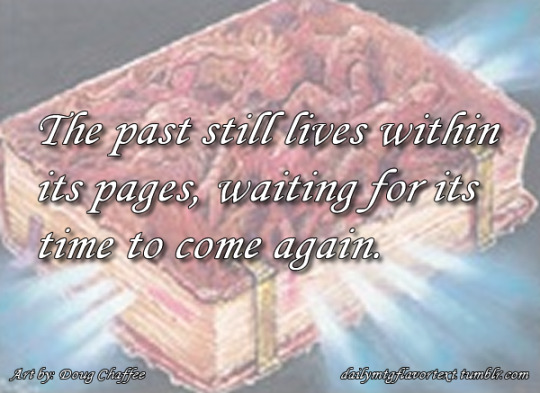
The past still lives within its pages, waiting for its time to come again.
-Sarpadian Empires, Vol. VII
18 notes
·
View notes
Text
The Lore of Modern Horizons 2: Tourach, Dread Cantor
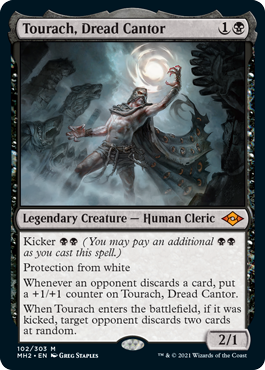
“Tourach was the founder of the Ebon Hand, a religious movement that split from the Leitbur religion centuries before the fall of the Sarpadian Empires. Tourach and his followers were necromancers able to work great magics by means of sacrifice, often of their limbs, but sometimes of human lives. But Tourach's greatest power lay in chants and hymns that could cause insanity in all who heard them. Upon Tourach's death, the members of the Ebon Hand deified him, while the followers of Leitbur lived in continual dread of his return. The god Tourach is said to have incarnated himself in several individuals during the ensuing centuries, including the immortal warrior Tymolin Loneglade and the Neo-Ebonic priest-king Vetro.”
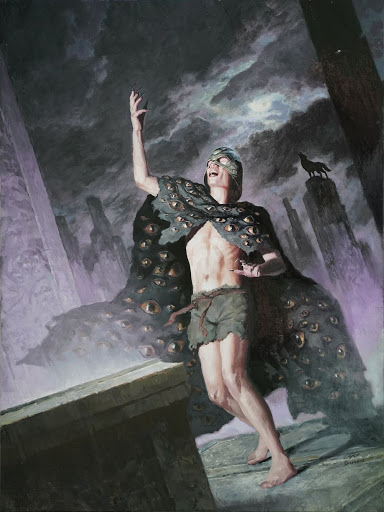
Art by Greg Staples and Zezhou Chen
#mtg#vorthos#magic the gathering#magic story#magic art#fantasy art#fantasy#flavor#lore#magic lore#modern horizons 2#MTGMH2
29 notes
·
View notes
Note
Hello! I have an abiding love for the Fallen Empires story, so much so that I finished NaNoWriMo with 50k words about an Icatian scout. My question is, aside from And Peace Shall Sleep, are there any other large bodies of work set on Sarpadia that you know of (novels, maybe a large fan-fiction story)? I’d like to continue with this story and I’m trying to establish the bounds of Sarpadian lore, as it were.
That’s the only one other than the Armada comic (two issues). A few short stories were published, but that’s it.
6 notes
·
View notes
Note
Is it me, or the Tumblr account "Sarpadian Empires Vol. VIII" is no more?
I believe she has changed the blog name to @loreleywrites
28 notes
·
View notes
Text
Lo Sarpadia: Fallen Empires
If I had gotten into Magic earlier than I had, I would be fanatical about The Dark, Arabian Nights, Legends or Antiquities expansions(to be fair, I am slightly fanatical about these expansions, partly because they are “before my time,” but mostly because they have great flavor)(and, while Legends and The Dark were still on sale when I started playing, I didn't start buying until 1995). But my Vorthos was first triggered like an immune response by the history recorded in the volumes of The Sarpadian Empires; Fallen Empires.
Icatia, Vodalia, Havenwood, Trokair, Delif, Oliver Farrel, Endrik Sahr, Tourach, Leitbur, Svyelune, Thelon, Humans vs. Goblins, Merfolk vs. Homarids, Elves vs. Thallids, Orcs vs. Dwarves, Thrulls versus everybody! This set hinted at so much flavor! Civilizations, religions, battles, new organisms; a lot to spark your imagination, especially since the cards barely hinted at the things that happened. And, not only was it hinting at past events, it hinted of an ominous future(Ice Age!)!

To many Magic fans I know, this set is right up there near Homelands in terms of its popularity, especially since, I believe, it existed in the shadow of two great, and big, sets; Legends and Ice Age. But in the Vorthos recesses of our minds(I believe dear Maro himself said that everyone is a little Vorthos and a little Mel), this set, and what it introduced, has continued to resonate with us Magic players. And it resonates with the designers at Wizards, still. While the rest of us Homarid fans believed that Wizards was never going to give us walking crustaceans again(and volume suggests that they are reticent to do so), they kept throwing us bones, or carapaces, in Alliances, Time Spiral and Dominaria. Thallid and Saproling fans were much luckier, being that they are the Fungus creature type, and have seen more sets with cards that create Saprolings; Dominaria even gave Fungus lovers a Legendary Fungus creature to build Commander decks around(“There can be only on…fungus!”).
Further triggering the Vorthos gland is that many questions arise from this set alone. Was Farrel radicalized before Icatia was set upon? What was the cause of the schism that led to the creation of the following of Leitbur and the following of the Ebon Hand? Are you telling me the Elves were overrun by the very Thallids that they were farming? And, if the cooling climate favored the Homarids, why have they been so limited in expansions since?

To be fair, it has been a while since I have read the Magic novels, and all my burning questions might be answered in Jeff Grubb’s great book, The Gathering Dark, or some other piece of MTG literature(which still pleases my Vorthos to this day). A piece of me even hopes that this will reach the eyes of a Magic designer and we will get a plane, not filled with Merfolk, but with loads of Homarids!
Thank you for coming and reading my Vorthos blurbs. Tune in next week when I will rant for another 500 words. Until then, may Svyelun and her tides favor you.
2 notes
·
View notes
Text
MtG 4 Colors Philosophy
4 color philosophies are Tricky if not impossible from what many say, but, through my restless mind and digging up the subject i've come to conclusion that Sure, they can exist and I will go through each to voice my opinion and others opinion on the subject at hand.
Firstly my sources vary from many tumblr blogs and tv tropes website. the blogs are vast to name but to name a few, @flavoracle, @magus of the colorpie, and @sarpadian empires.
In order to justify 4 colors one must not look for qualities they have but rather lack. What about that one color can you completely say I don't have. to go into further i shall describe them.
Anarky, Unorganised, Absolute Freedom (Non White) Blue, Black, Red Green- To claim this one must be very unorganised or value their freedom above order and safety. Blue doesn't like it's experiments to be hindered, Black doesn't like being told what to do, red is well red, and green despises unnatural order. Each of these embrace chaos in one way or another. A example from Fiction would be someone like Bill Cipher from gravity falls.
Altruism, Selflessness, Power of Friendship (Non Black) White, Blue, Red, Green- This four color ensemble value others in some way. Without Black, this combination will give the shirt off it's back to someone in need, help out it's community on it's days off, or well, just be the typical hero from the movies we all know know and love. Iroh from Avatar the Last Airbender is this color combination. Very wise and kind. Loving and nurturing, but not without thinking things through and coming up with new ideas (he created a way to redirect lightning by studying Water bending after all) and is above all very honorable. I don't think anyone will argue with that.
Impatience, Aggressive, Decisive (Non Blue) White, Black, Red, Green- Without Blue, One doesn't think, they feel. They feel everything and this can be overwhelming at times. ALways Restless until they tire themselves out. Their life revolves around their desires which itself does not have to exclude others. Without thinking things through they will most likely regret many of their impulsives even if they think it's for the best at the time. Wreck it Ralph seems to be a good example of this character. While not a bad guy he is impulsive and angry which is red. He does care about others and wants to prove he is a good guy and is willing to sacrifice himself to fix his own mistakes. his acceptance of his role is also a green trait.
Stability, Patience, Growth (Non Red) White, BLue, Black, Green- Without Red, this color combination thinks things through and never makes a hasty decision, sometimes never making one at all. Logical, Progressive, Pragmatic, and Organised, this combination can easily improve it's situation as it will always have a plan of somesort. The only example given to me was Spock himself. Blue Logic, Black Pragmatism, White Selflessness, and green wisdom. Spock himself isn't even without emotion (KHAN!!!) he is just willing to do what is most logical rather than impulsive.
Aspirations, Progress, Dreams (Non Green) White Blue Black Red- without Green, this Combo says screw destiney I do what i want. They take the chisel and change what is set in stone for it. If there is a sickness, it will find a cure, if there is war, it will not sit back and watch it, if it's family is hungry, it will go out and get it food. This color doesn't accept fate that is handed to it and wants all the credit for it's life. Blaming a higher power for your misfortunes isn't something it will do, Shit happens, time to fix it. Edward Elric is the most recurring example of this combination but i think David Xanatos from Gargoyles could also fit this combo. Elric needs no explanation (WATCH THE SHOW) Zanatos however is a very flushed out villain. White organization skills, Black Greed, Blue Intelligence, and his Red is very clear when it involves his loved ones.
No Quiz can identify you, you must discover it from within. I myself am a very patience person, so out of these i find myself as non red. what do you think your 4 colors could be?
12 notes
·
View notes
Photo

Thrull Wizard
"In crafting intelligent Thrulls to assist in sacrifices, Sahr inadvertantly set the stage for the Thrull Rebellion." —*Sarpadian Empires, vol. II*
Artist: Anson Maddocks
TCG Player Link
Scryfall Link
EDHREC Link
#mtg#magic the gathering#tcg#$0.25#anson maddocks#thrull wizard#fallen empires#creature#thrull#wizard
33 notes
·
View notes
Text
Blue’s philosophy, tabula rasa, and science
Sam Huffer, 13 January 2018
All contributions, comments, and feedback on this matter (and the essay) are welcome. If you read this essay and disagree with my view on the matter, you are more than welcome to add your thoughts. If you do agree or just want to comment on the essay, you are also welcome to contribute. If I have written anything inaccurate, or missed anything that would be relevant, please do point it out; this is the first essay I’ve put up on Tumblr regarding the color pie, so while I would hope I didn’t miss anything, chances I probably did. If you think there is a particular article or essay that I and/or others should read on the matter, especially with regards to the color pie, links, references, etc. are most welcome. Enjoy.
Blue’s philosophy is the only one that blatantly contradicts science
Magic: The Gathering (1993), the brainchild of game designer Richard Garfield, was the first trading card game and quite possibly continues to be the best trading card game to date, even after over two decades and many competitors. It has limitless depths to its flavour and strategy and has captivated the minds of countless gamers, children, and young adults. Critical to its success, and central to both its function and flavour, is the color pie, which divides cards up into five categories, or colors: white, blue, black, red, and green. Each color has its own strategies, strengths and weaknesses, and its own characteristics, identity, values, and philosophy.
A day or two ago on Tumblr, I came across an anonymous ask addressed to Andrew Weisel, who runs the blog Sarpadian Empires Vol. VIII and writes about Magic. The ask alleged that “Ironically… blue’s philosophy is the only one that blatantly contradicts science. Blue believes in the concept of tabula rasa, something which has pretty much been disproved by science.” Weisel responded by saying ““I could be a ballet dancer or a truck driver or a celebrity chef!” doesn’t blatantly contradict a nebulous definition of SCIENCE” (Weisel, 2018). I saw the post, and added my own thoughts to the discussion, saying that blue could still “apply its philosophy of becoming what it wants” within the constraints of genetics and that it thus “does not contradict science in that sense” (Huffer, 2018).
However, thinking about it now, I’m not particularly satisfied with my comments on the matter. Therefore, I have done a bit of digging with regards to blue’s philosophy, tabula rasa, and any conflict with empirical data.
I should first concede that some of the resources I have used (namely Wikipedia and the like) are quite possibly imperfect in their accuracy if not in their nature, though I would argue that they do at least give readers a general idea of the concepts entailed, and are sufficient for my purposes here. Furthermore, while one could vandalise Wikipedia’s entry on tabula rasa to say the phrase refers to tables of adjustable heights or some other nonsense, for example, I doubt anyone will be bothered to do so. I’m confident trolls can think of higher profile pages to vandalise, pages that are focused on more controversial topics than the initial state of the human mind.
A lesson in philosophy
The first question that unfamiliar readers might have is this: what is blue’s philosophy? (And my question here is why haven’t you already discovered and fallen in love with Magic? Seriously, what have you been doing with your lives? Magic is amazing!)
Blue believes in potential, that “anyone and anything has the ability to change for the better” (Rosewater, 2008), and that everyone is “born a blank slate with the potential to become anything” (Rosewater, 2015). It believes that life’s purpose is for people to “learn what [they] want to be and how to achieve that goal” (Rosewater, 2003), and that they just need to “figure out what [their] potential is” so that they can “track down the means by which [they] can achieve it” (Rosewater, 2015).
Blue values learning, knowledge and education. It values calm, logical analysis and adaptability, an environment that allows individuals to strive to reach their potential, and access to the tools, means, and methods through which one can maximise and achieve their potential. It is the most comfortable with technology, caring only about the “function of an item, not its origin” (Rosewater, 2015). And in Magic’s lore, it has the greatest knowledge of the inner workings of magic, and thus the greatest control over its operation and manipulation.
(It should be noted that the above is just a brief summary of blue’s philosophy, and thus does not cover all aspects of it. However, those points will suffice for this essay. That said, I do encourage readers to do their own research on the color pie; it is an interesting, fascinating, and brilliant topic that no-one should regret reading about.)
The maybe-not-so-blank slate
What about the concept of tabula rasa? While many people would know what it is, many more would not have the faintest clue what those two words mean. Briefly tapping into Google’s near-omniscience will turn up a number of definitions and explanations:
From the online Merriam-Webster dictionary: “the mind in its hypothetical primary blank or empty state before receiving outside impressions”.
From its webpage at Encyclopaedia Britannica: “a supposed condition that empiricists attribute to the human mind before ideas have been imprinted on it by the reaction of the senses to the external world of objects.”
From Wiktionary: “The idea that the mind comes into this world as a “blank slate””, with blank slate defined by them as “Something that is clear and empty, or free from preconceptions and biases.”
From Wikipedia, according to a paraphrased John Locke: “at birth the (human) mind is a “blank slate” without rules for processing data, and that data is added and rules for processing are formed solely by one’s sensory experiences… As understood by Locke, tabula rasa meant that the mind of the individual was born blank, and it also emphasized the freedom of individuals to author their own soul. Individuals are free to define the content of their character—but basic identity as a member of the human species cannot be altered.”
(Again, I concede that some of the resources I have used here are by nature imperfect. However, they do provide readers with a general idea of the concepts entailed, which is sufficient for my purposes here.)
A blue tablet
The original ask that prompted this essay claimed that blue believes in tabula rasa, which has been disproven by science. At a cursory glance, one could see how such a conclusion could reasonably be reached. Anyone with a decent high school education would be aware that each individual is genetically pre-programmed, in a way, with certain characteristics, traits, and inclinations. According to Wikipedia’s Tabula rasa page, even an infant’s mind is not the equivalent of an empty warehouse and their brain devoid of any content or structure, but rather has mechanisms and “pre-wiring” in place preparing it for social interaction “not even hours after birth”, and that unborn twins engage in social actions aimed at each other “starting from the 14th week of gestation”. No doubt this is only one of a number of instinctual mechanisms built into the infant brain.
While it would seem that a state of total tabula rasa with regard to the complete lack of any structure and content in the minds or brains of the newly born is disproven, it should also be noted that that is not the only meaning ascribed to the phrase “tabula rasa”. For instance, the concept’s Wikipedia entry notes that there have been claims “in psychology and neurobiology… that the brain is tabula rasa only for certain behaviours” (for example, “with respect to one’s ability to acquire both general and special types of knowledge or skills, Howe argued against the existence of innate talent”). Furthermore, tabula rasa’s Merriam-Webster page notes that “In later years, a figurative sense of the term emerged, referring to something that exists in its original state and that has yet to be altered by outside forces.” Arguments could be made for and against the veracity of such positions; I shall leave that to scientists and philosophers more familiar with and invested in the topic and related evidence, and even those who are willing to do much more thorough homework on the topic than I have done here.
Separate from the issue of the truth of the concept of a literal tabula rasa, whether all-encompassing or limited solely to acquired knowledge and skills, is whether or not blue subscribes to the concept to begin with; this issue I will put forward an argument for. Going through Mark Rosewater’s articles focusing on blue’s philosophy (2003, 2008, 2015), I do not find any explicit mention of the concept of tabula rasa in the sense that minds begin literally empty of all structure and/or knowledge. Yes, they do mention that blue views people as blank slates, but the feel of those statements is more that they relate to people having the ability to become whatever they wish than to the concept that people’s minds are initially blank. In fact, the only mention of the two words “tabula rasa” that I have thus far found in a resource focusing on blue’s philosophy is in Gamepedia’s article on blue: “The belief that dream can be reality – to which Blue holds fast – is belief in tabula rasa, the blank slate.” However, the article goes on to frame that within the context of blue’s disagreements with green regarding free will and destiny, saying that “Blue believes that all things begin existence blank, without destiny or purpose” whereas green believes “that one’s life is predetermined, say, by natural ability”. (For more details, read both Pie Fights (Rosewater, 2016) and Thank You For Being A Friend (Rosewater, 2017).) As such, I think one could reasonably conclude that blue does not necessarily subscribe to the concept of tabula rasa, or at least not a literal take on it concerning the human brain. In fact, one could argue it would be the first to drop the concept if or when disproven, given how it values adaptability, knowledge, and information, and its commitment to the application of logic and rational thought before acting.
Science, potential, and Magic
On a slightly tangential note, but one linked in my mind to questions of blue subscribing to the concept of tabula rasa, I suspect that some might still contend that even if blue accepts the facts and evidence regarding the makeup of the infant mind, it rejects or ignores people’s initial traits and characteristics as determined by genetics, evolved instincts they are pre-programmed with, and so on, and that on that basis, blue is unscientific or deluded. I would argue against such a view of blue’s beliefs.
I should first note however that I will not concern myself with blue’s philosophy towards adopting any occupation one wishes, taking any role one might be inclined take, etc., the constraints that might affect ones choices in this area, and the scientific accuracy of blue’s views there; Weisel’s original response succinctly and adequately disposes of any objections to what blue believes on those matters. Instead, I will focus more on blue’s philosophy regarding questions of whether a person can or will have the physical, mental, emotional, etc. capacity to do a specific action or task, and any limits that might prevent them from doing so, whether they be a person’s innate attributes, or acquired or imposed characteristics.
While none of Rosewater’s blue-centric articles explicitly state that blue accepts or denies that people have initial traits, characteristics, and predispositions that they have to work with, there is an implicit acknowledgement that blue understands this. He writes that blue believes “the world is a collection of resources that allow an individual the ability to transform himself into whatever he wishes” (2003), that to reach your potential, “You have to first figure out what your potential is” (2015), and that you should “strive to be the best that you can be” (2008). In each statement is an implicit acknowledgement that people start in an initial, imperfect state where someone might have characteristics they want to change, or that they might be lacking, or that might restrict their potential. If one takes “blank slate” comments as being figurative, or referring to questions of purpose and destiny rather than initial form and function, then blue’s philosophy is entirely reconcilable with science.
Furthermore, even if blue did reject the proposal that one’s “inbuilt” attributes can place a limit on one’s potential and what they could become, such a position could still be considered consistent with science in principle. For example, suppose that a child was born with no hands. Does this mean that the child will never be able to play a guitar, or hold a book, or play rock paper scissors? No. Their ability to any such activities is not, in principle, limited by the fact that they were born with no hands. Thanks to advances in science, it is possible to make such a disability inconsequential; the child could get prosthetic hands made, or undergo a hand transplant. It is possible in principle for them to overcome the attributes they were born with, and thus disregard any limits on their potential imposed by said attributes. If people are not metaphorical blank slates in this matter, they are still slates whose contents can be changed, through the writing of new content, or the erasure and rewriting of existing content.
As time goes, science will become more and more advanced, and individuals will be able to disregard more and more potentially constraining attributes. One could extend this argument from removing constraints to adopting enhancements beyond what one might normally be capable of even under ideal circumstances. As such, one could argue that the only constraints on one’s potential are the limits of science itself. That said, whether humans should artificially enhance themselves is another argument entirely and one that I will not step into. I merely make the point that one could argue that such is possible, nothing more.
One final comment that I will make on the issue is that within the Magic universe, science is not the only method through which individuals might remove inborn constraints. As the franchise’s name suggests, blue would also have access to magic. The feats it could achieve with magic would likely exceed even the achievements of science, and plausibly remove constraints that even perfect scientific knowledge could not do away with. Blue would be able to laugh at the limitations imposed by nature and science, and would be able proceed to devise and employ the best spell to override them.
The blatant non-contradiction
There is nothing ironic about blue’s philosophy at all. Blue’s belief in becoming what one wishes to be, in maximising one’s potential with the right knowledge and tools, does not equate to or necessarily encompass a belief in tabula rasa, or any given take on the concept. Its goal of improvement through learning, of, in the most extreme, perfection through omniscience (or as close to perfection and omniscience as is practically possible), is perfectly reconcilable with established facts. Its views do not contradict the current consensus in science, and even if they did, blue would be the first to admit it and adapt to the facts; it is the color of learning, logic, and adaptability after all.
References
Games
Garfield, R. Magic: The Gathering. Renton, Wizards of the Coast (1993)
Articles and Essays
Tabula rasa, Encyclopaedia Britannica, Inc., viewed 12 January 2018, <https://www.britannica.com/topic/tabula-rasa>
Tabula Rasa, Merriam-Webster, Incorporated, viewed 12 January 2018, <https://www.merriam-webster.com/dictionary/tabula%20rasa>
2017, blank slate, The Wikimedia Foundation, Inc., viewed 12 January 2018, <https://en.wiktionary.org/wiki/blank_slate>
2017, Blue, Curse, viewed 5 December 2017, <https://mtg.gamepedia.com/Blue>
2017, Tabula rasa, The Wikimedia Foundation, Inc., viewed 12 January 2018, <https://en.wikipedia.org/wiki/Tabula_rasa>
2017, tabula rasa, The Wikimedia Foundation, Inc., viewed 12 January 2018, <https://en.wiktionary.org/wiki/tabula_rasa>
Huffer, S 2018, Oath Inc, viewed 11 January 2018, <https://huf0001.tumblr.com/post/169572876415/ironically-i-think-blues-philosophy-is-the-only>
Rosewater, M 2003, True Blue, Wizards of the Coast, viewed 3 December 2017, <https://magic.wizards.com/en/articles/archive/making-magic/true-blue-2003-08-11>
Rosewater, M 2008, Striving for Perfection, Wizards of the Coast, viewed 12 January 2018, <https://magic.wizards.com/en/articles/archive/feature/striving-perfection-2008-11-17>
Rosewater, M 2015, True Blue Revisited, Wizards of the Coast, viewed 12 January 2018, <https://magic.wizards.com/en/articles/archive/making-magic/true-blue-revisited-2015-07-20>
Rosewater, M 2016, Pie Fights, Wizards of the Coast, viewed 20 November 2017, <https://magic.wizards.com/en/articles/archive/making-magic/pie-fights-2016-11-14>
Rosewater, M 2017, Thank You For Being A Friend, Wizards of the Coast, viewed 28 December 2017, <https://magic.wizards.com/en/articles/archive/making-magic/thank-you-being-friend-2017-03-20>
Weisel, A 2018, Oath Inc, viewed 11 January 2018, <http://sarpadianempiresvol-viii.tumblr.com/post/169564034219/ironically-i-think-blues-philosophy-is-the-only>
#mtg#color#color wheel#color pie#blue#science#tabula rasa#blank slate#potential#original#philosophy#contradiction#essay
3 notes
·
View notes
Text
Prelim Polls: Magic the Gathering (Oops! All Fungus)
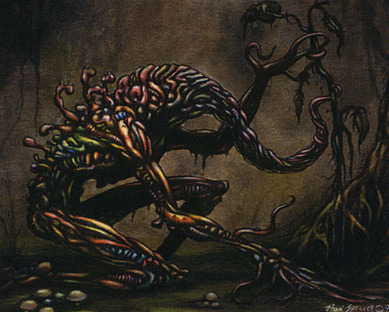
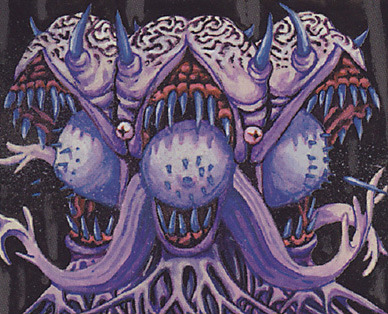
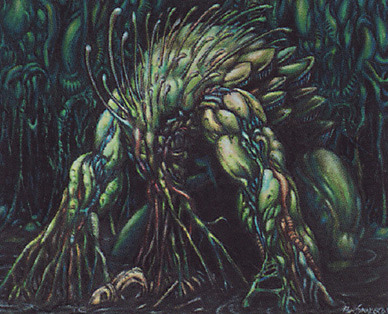

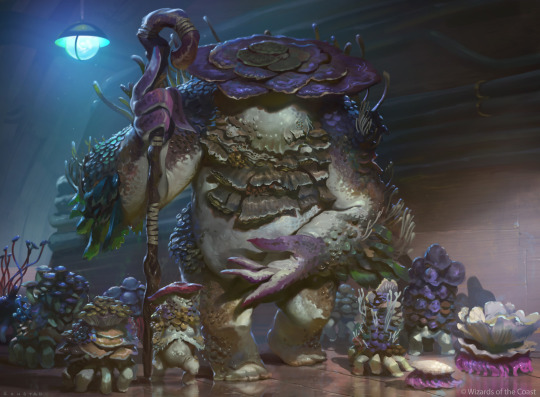
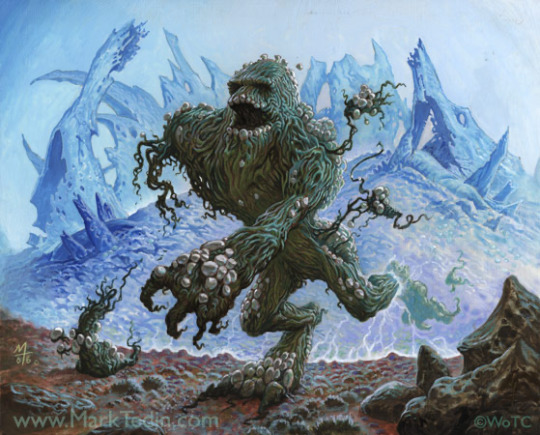
2 will go through, propaganda under cut!!
Thallid: In a time of famine, Thelon, an elven druid, infused the fungus people had resorted to eating with green mana to create a living creature that produced saprolings. The fungus thrived in the forest, drawing mana that rivalled the elves' abilities. Farmed as if cattle, the thallids would eventually gain sentience and begin to develop rudimentary signs of intelligence such as wielding weapons and creating shelter. The elves would be split into two factions over outright destroying the thallids or assisting them and finding new food sources. The elves, weakened by the political rift, would eventually be overrun by their own creations. This is partially due to difficult combat against the thallids whose fungus roots made them near impossible to kill. By their own nature there were often more thallids after battles than before.
Thorn Thallid: Originally the thallids were bred as food. Thorn thallids seem to have developed a defense against this.
"The cooling climate forced the elves to experiment with new food sources." - Sarpadian Empires, vol. I
"The dangers in cultivating massive plants caught the elves by surprise." - Sarpadian Empires, vol. III
"Scholars still debate whether the Thallids were truly sentient." - Sarpadian Empires, Vol. III
"I don't know which is worse, getting hit with those darts or having to watch them grow back." - Orcish Soldier
Thallid Devourer: Originally they were bred as food.... now YOU are the food.
Feral Thallid: "Born and bred of fungus, thallids were nearly impossible to kill." - Sarpadian Empires, vol. I
Slimefoot: This thallid is something like a mascot and a deck swab on the skyship Weatherlight, tending a herd of saprolings that help keep the ship clean. Slimefoot is harmless, somewhat adorable, and useful, so Jhoira and the rest of the crew tolerate the thallid's presence. Passengers are warned to keep out of Slimefoot's way, but the grumpy fungoid is easily plied with food.
Fungal Behemoth: Submitted without propaganda :(
6 notes
·
View notes
Note
On the subject of Homarids, there is also the rarely-used creature type Camarid, which appears only as tokens made by Homarid Spawning Bed and Sarpadian Empires, Vol VII. My understanding is that a Camarid is merely a juvenile Homarid - if (when) Homarids return, would you keep Camarid as a separate type, or merge it into Homarid? If it were kept, what are the chances of seeing a non-token creature with the Camarid type?
Camarid is a rare case of the juvenile version of a creature being a different creature type. If we brought Camarids back, they would just be Homarids.
37 notes
·
View notes
Photo
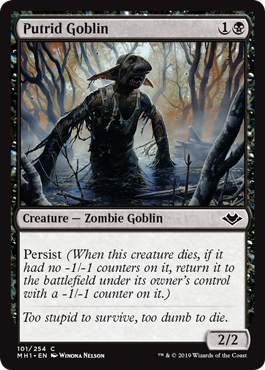


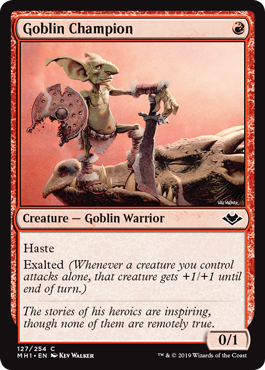

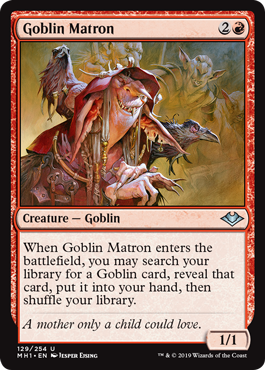
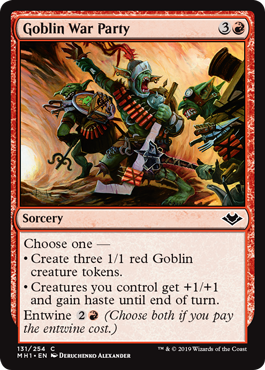

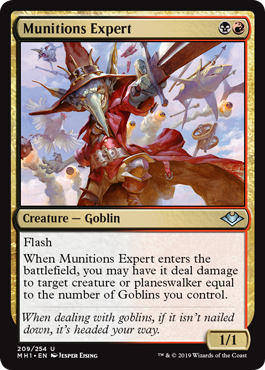
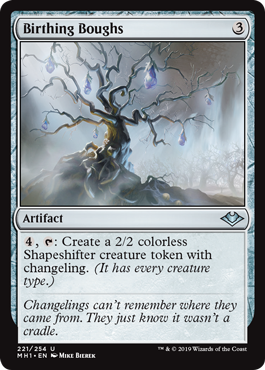
GOBLINS! Here’s all of Modern Horizon’s goblins for your convenient viewing pleasure. Most of these aren’t worth talking about because they’re limited filer, but there’s a few I’d like to mention.
Sling-Gang Lieutenant is a potential finisher option in Modern. Three goblins for 4 mana is fine, and it can drain a lot of life without attacking, or after attacks. There’s a lot of competition against it but it’s worth keeping an eye on.
Goblin Engineer has all sorts of associated shenanigans, but these aren’t for goblin decks, they’re for artifact decks. I’ll tell you he’s cool, but I’ll let someone else figure out the details. Play him in Daretti Commander, though.
Goblin Matron is a huge deal. First off, Goblin Matron was formerly the card with the single highest foil multiplier because she only had one foil printing, so it’ll be nice to see foil ones out there in real numbers. But more importantly, adding her to Modern allows Goblins to become as toolboxy as they are in Legacy, able to run a series of one-ofs of weird goblins and use Matron to get just the one they need, be it using me to win a stall-out, grabbing Gempalm Incinerator for damage, or getting Goblin Ruinblaster to mess with weird lands. Goblin Matron could make a new Modern Goblin deck, especially with Aether Vial.
Goblin War Party will fit in many commander decks. Just keep it in mind. Three creature tokens for four mana is a fine rate if you need creature tokens.
Mons is a really cool and interesting card, but there is just so much competition in goblins at 3 mana. With Matron, I could see running Mons as a 1-of. In Commander, there’s plenty of options for him. He sort of makes for an inverse Purphoros, where you get the damage on gobliny death... There’s less of it, but you get to shoot creatures. He fits into the 99 of any Goblin or Purpohoros deck easily, but as a Commander I think he still falls shy of some other goblin options. Dumping mana for goblins is not as good as tapping for goblins, and while he can go infinite with Mana Echoes and Skirk Prospector, going infinite is not an awfully high bar in commander.
Munitions Expert is going to be Modern’s version of Gempalm Incinerator. It could see play. It’s honestly good enough as a card. Whether or not it’s good enough to justify running black is its own question, when lots of goblins need RR, but it easily goes in the same deck as Goblin Matron.
Birthing Boughs I... almost wanted to talk about. Then I remembered Sarpadian Empires, Vol. VII already exists and is widely considered unplayable trash, so forget Birthing Boughs.
32 notes
·
View notes